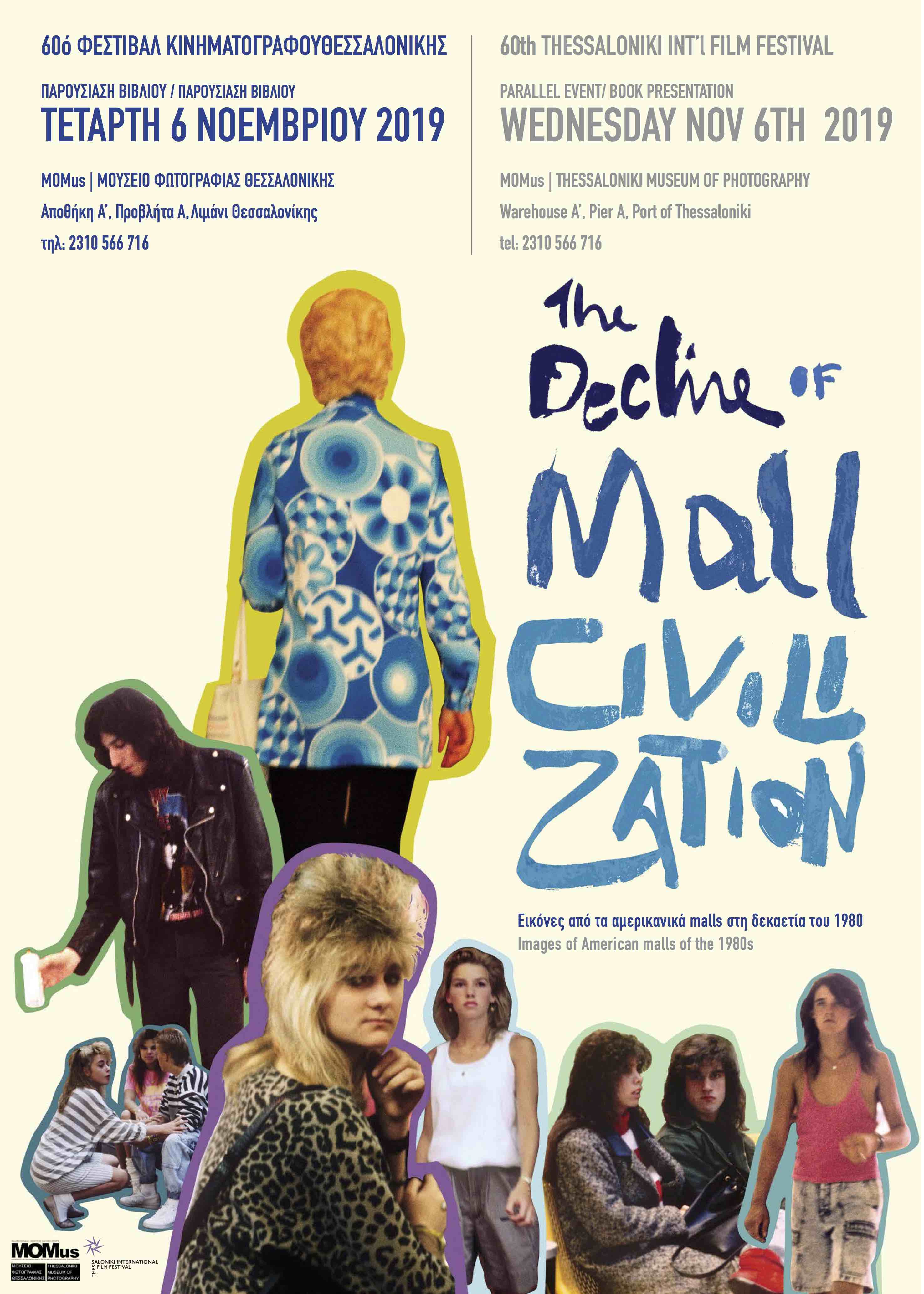
05 Nov Mall Presentation for Thessaloniki
The following is a presentation I put together for the photo museum in Thessaloniki.
I want to first thank the festival and the museum for having me here – in addition I want express my extreme appreciation to Efi Papazachariou for her help and support. It’s thanks to John Waters that I’m here today, because he chose to feature our film Who Took Johnny.
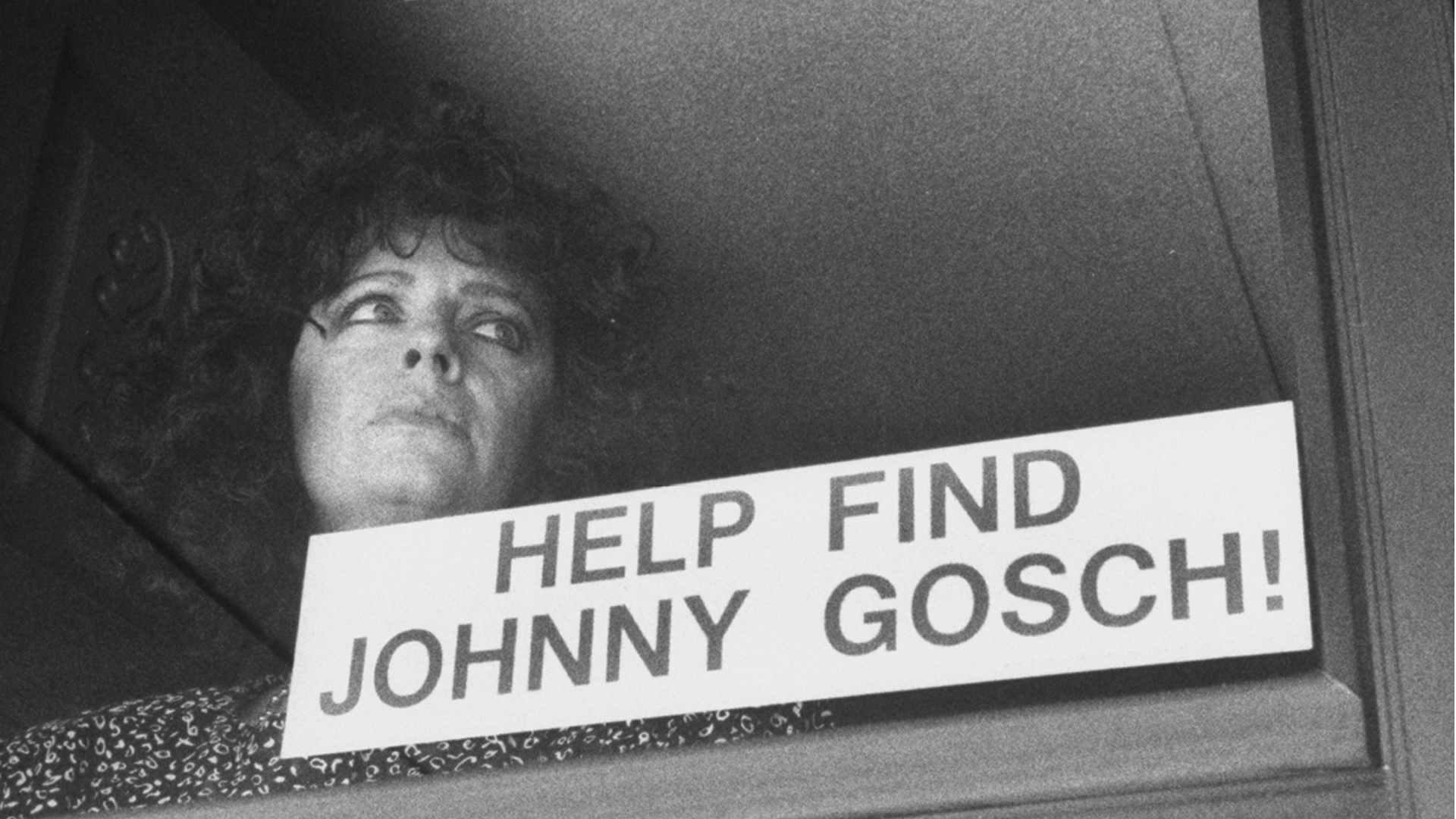
A few years ago, when we showed the film in his hometown of Baltimore Maryland, Mr Waters came to see it. The film is about a mother’s epic search for her missing son. We showed it on Mother’s Day-, and it’s a very heavy film. So, when my partner Suki and I came out after it screened there was a very heavy silence. I leaned into the microphone and quietly stated, “Happy Mother’s day”. There was a collective groan but one man in the front row cackled mischievously. I looked down and it was Mr. Waters. I love that he chose to show it here in particular because Thessaloniki was the only place it showed in Europe, and it was here that it got a fantastic review from the Hollywood Reporter. I hope you can check it out when it plays tomorrow.
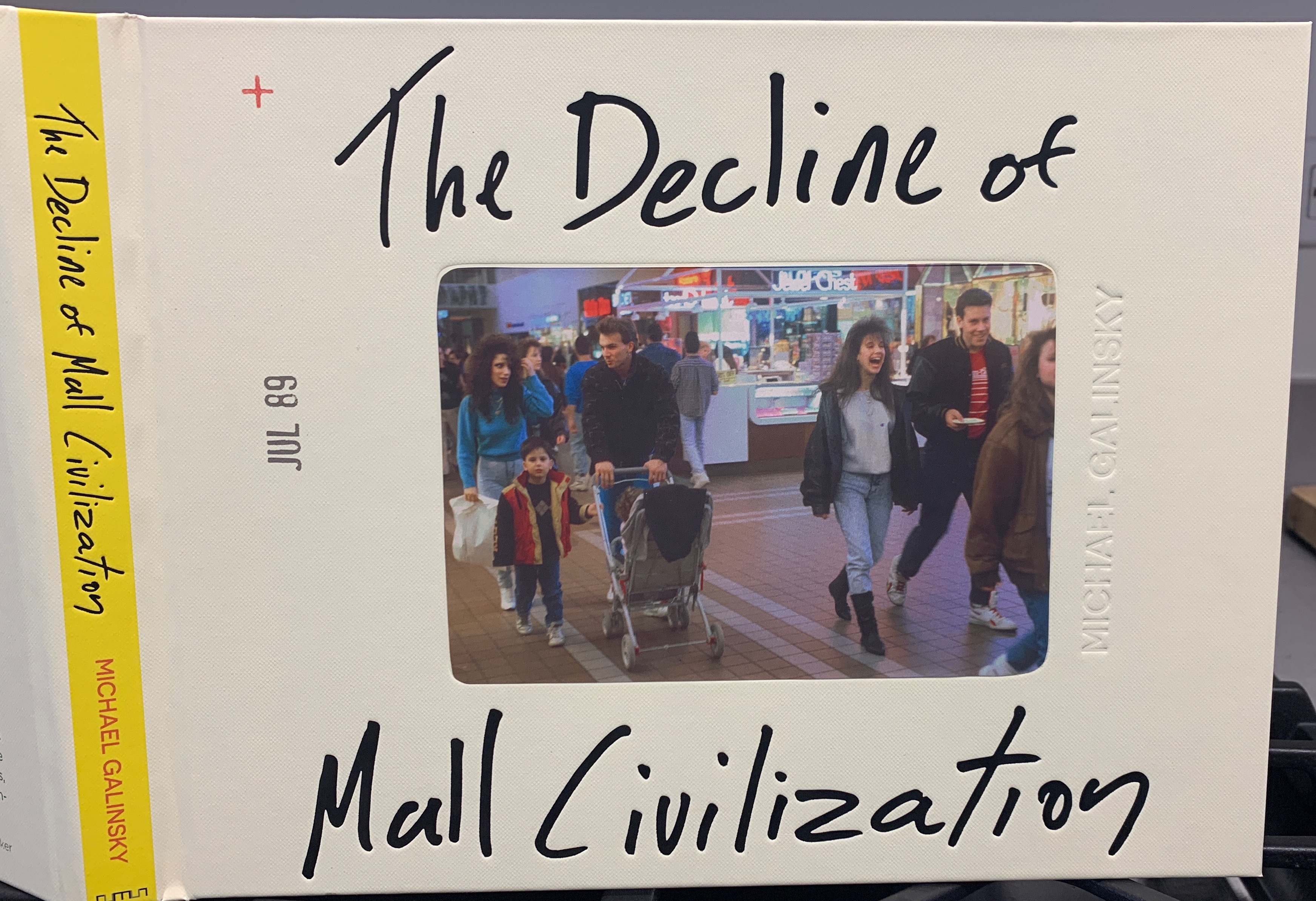
Before I really get into talking about the work I want to show you some of it via a video I made when I rediscovered the slides 20 years ago. I shot the images in this book during a trip across the US. A couple of weeks after I got back I started a band with friends and this song was one of our early singles. Our band was largely pre-internet- so we don’t really exist on it. A few years ago I started to make videos for some of our songs using images I’d shot. For this song Punk Rock City USA I scanned the mall images and dropped them on the timeline.
This work, that I shot in 1989, when I was barely 20 years old, is the first real art project that I ever undertook. Since I had no connections and no real understanding of how things worked in the photo world or the art world I had no way of getting it seen or discussed. At the same time, it wasn’t really something that I think people would have embraced at the time even if I did have connections. The work went into a box, which was great, because 20 years later when I rediscovered them, the images had aged in the best way. Again, it’s important to remember that when I shot these images the internet was not even a part of our lives. In college I never got an email address. It was only around 2000 that the internet started to prioritize images, and years after that before video started to take off. These images document the moment before the internet took off, and it is the internet that made the images take off.
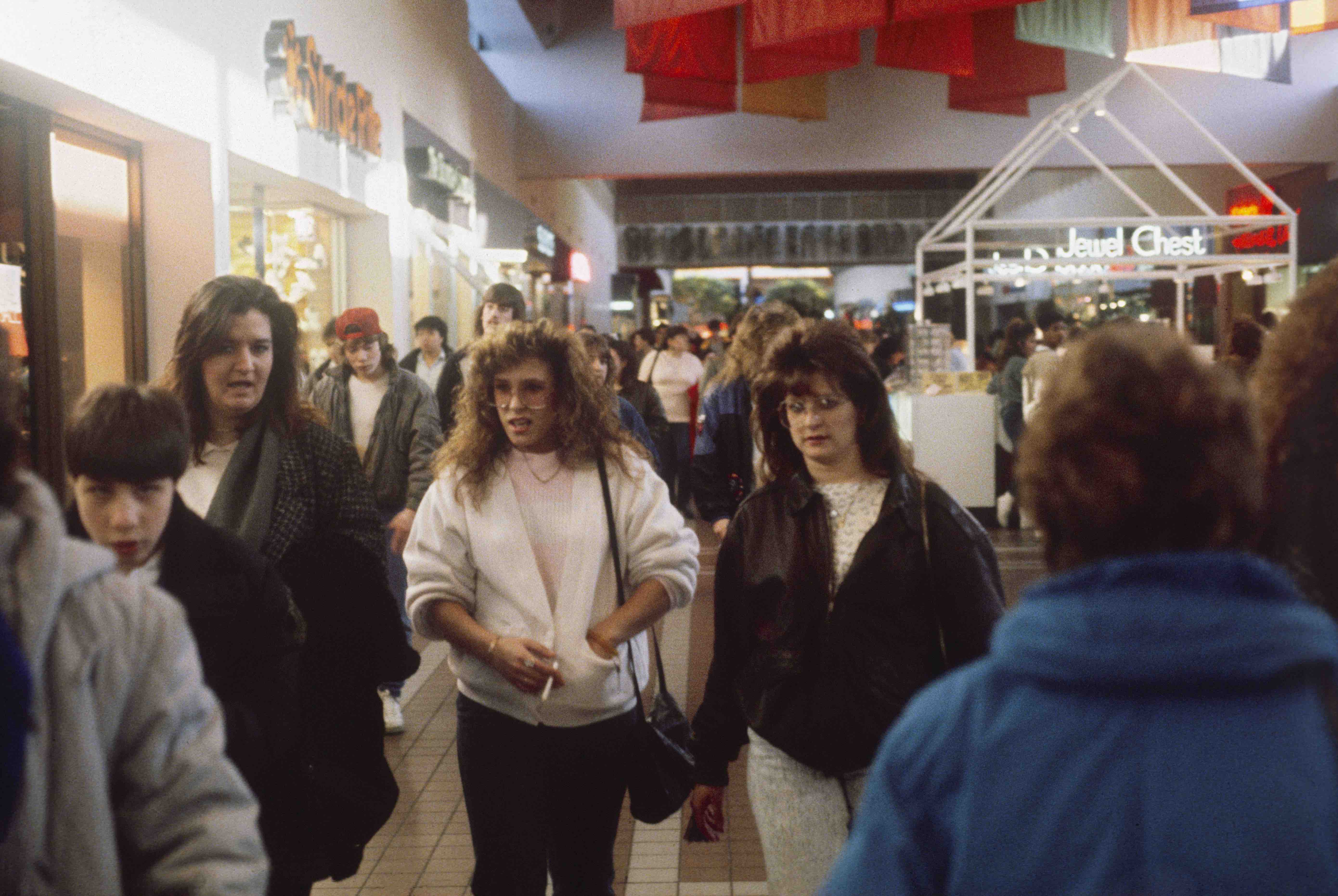
When I found them in 2010, and I put them online, they exploded in popularity. Re-discovering this work changed the way I thought about making work- photos and films. Part of the reason that I couldn’t do anything with them at the time was because the work was so present that it didn’t have much meaning in the moment. I showed them to people and they said, “yeah- it’s people in malls- so what”. In other words, the images didn’t call that much attention to themselves. They weren’t decisive moments, or perfectly constructed. They didn’t drip with meaning, and they didn’t make fun of the people in the images, nor explicitly comment on them or their milieu. They simply documented that world in a fairly dry way. While this made them boring in the moment, 20 years later, and now 30 years later, it makes them incredibly alive and present.
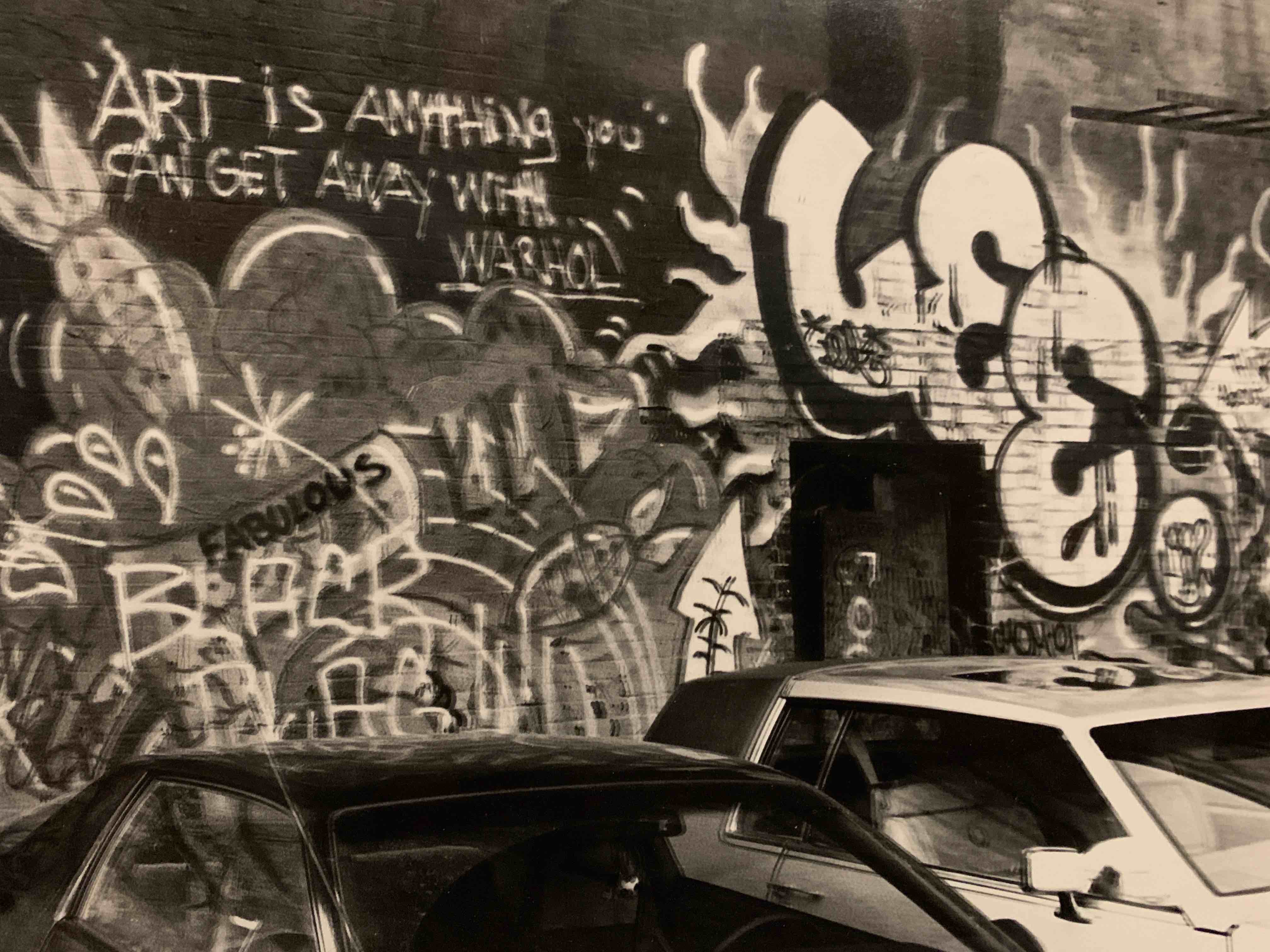
For me the obsession with making images started when I took a photo class in high school. The magic of seeing images appear in the darkroom was mind blowing to me, and I spent much of my lunch period every day printing pictures. One of the first images I made was of a graffiti wall that had a Warhol quote- “Art is Anything That You Can Get Away With”. I wasn’t sure how I was going to get away with it but that idea really appealed to me- that 50 percent of art was a con. It also gave me the sense that ideas were as important as aesthetics.
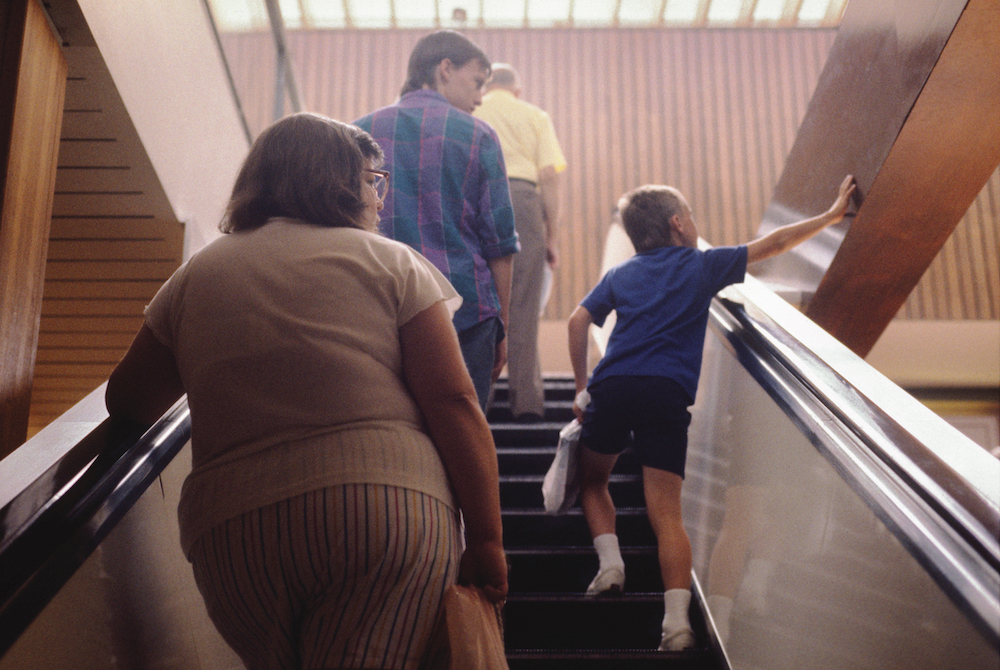
Most of the time when I make work, I am following an impulse, or idea, and the deeper meanings of that work and that impulse only reveals itself much later. As I get older I get more comfortable with that idea, that I need to follow an impulse even if I don’t know where it might lead or what I might do with that work. It was harder when I was younger and less faith that things would work out.
Several years later, when I took my first photo class in college it was a color printing class. A couple of weeks into the class, I ended up at a mall with my girlfriend and immediately knew I’d found the subject for my class project. I was a religious-studies major by accident. By the time I had to declare a major I had already completed it because I was interested in the ideas, and it was these ideas that informed my exploration of the mall as the center of American culture. I was making street photos in a mall, which was on the line between legal and not exactly legal, because the mall was a private space masquerading as a public one, the mall owners could easily shut me down, but the people in the mall were still very much out in public so had no real presumption of privacy.
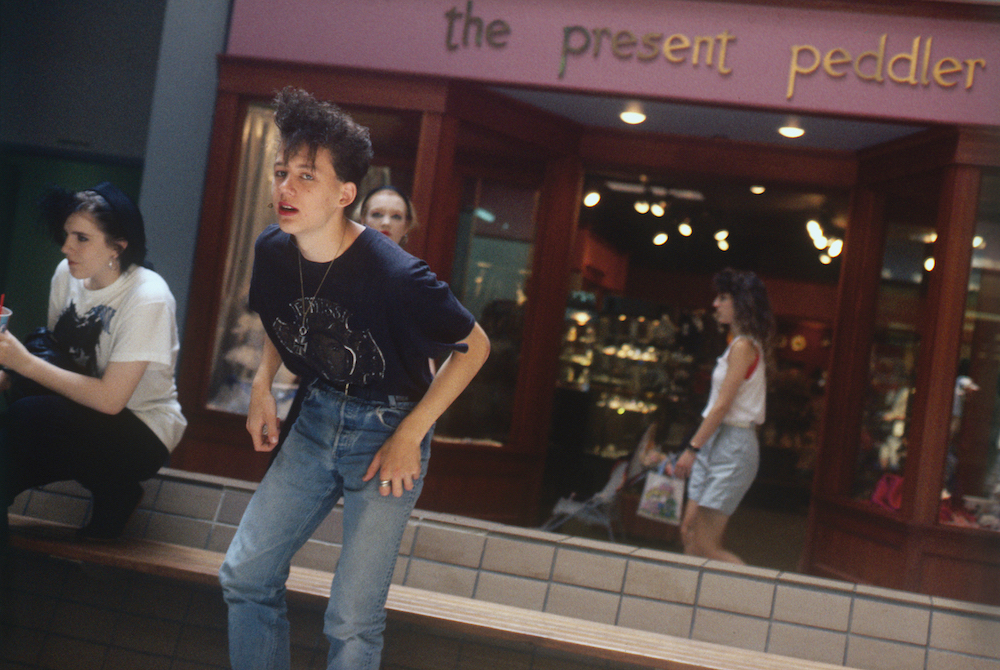
30 years after shooting these images I can see themes, frames, and aesthetic sensibilities that run through everything I’ve done. At the time, I could not have articulated these ideas in a meaningful way, but the impulse was there. Looking back at the work has helped me to make sense of not only this project but the work that followed it, and the work that has come after re-discovering these images.
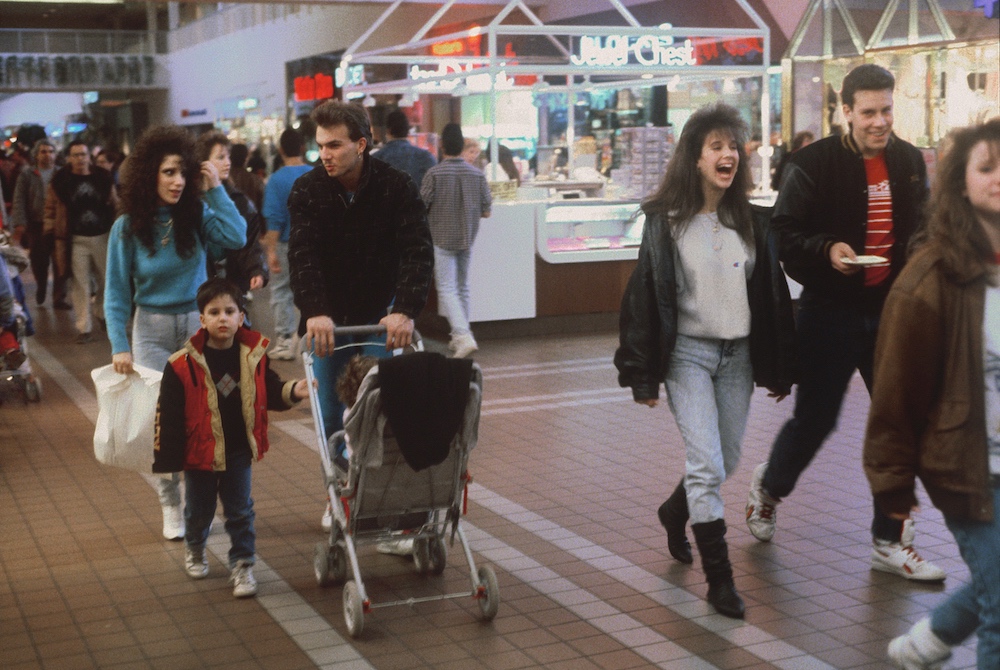
As I made, and make, photos I was often both consciously and unconsciously aware of other images that I had seen. When I saw the family in the image above walking I immediately thought of a Diane Arbus image of a family and that made me hit the trigger.
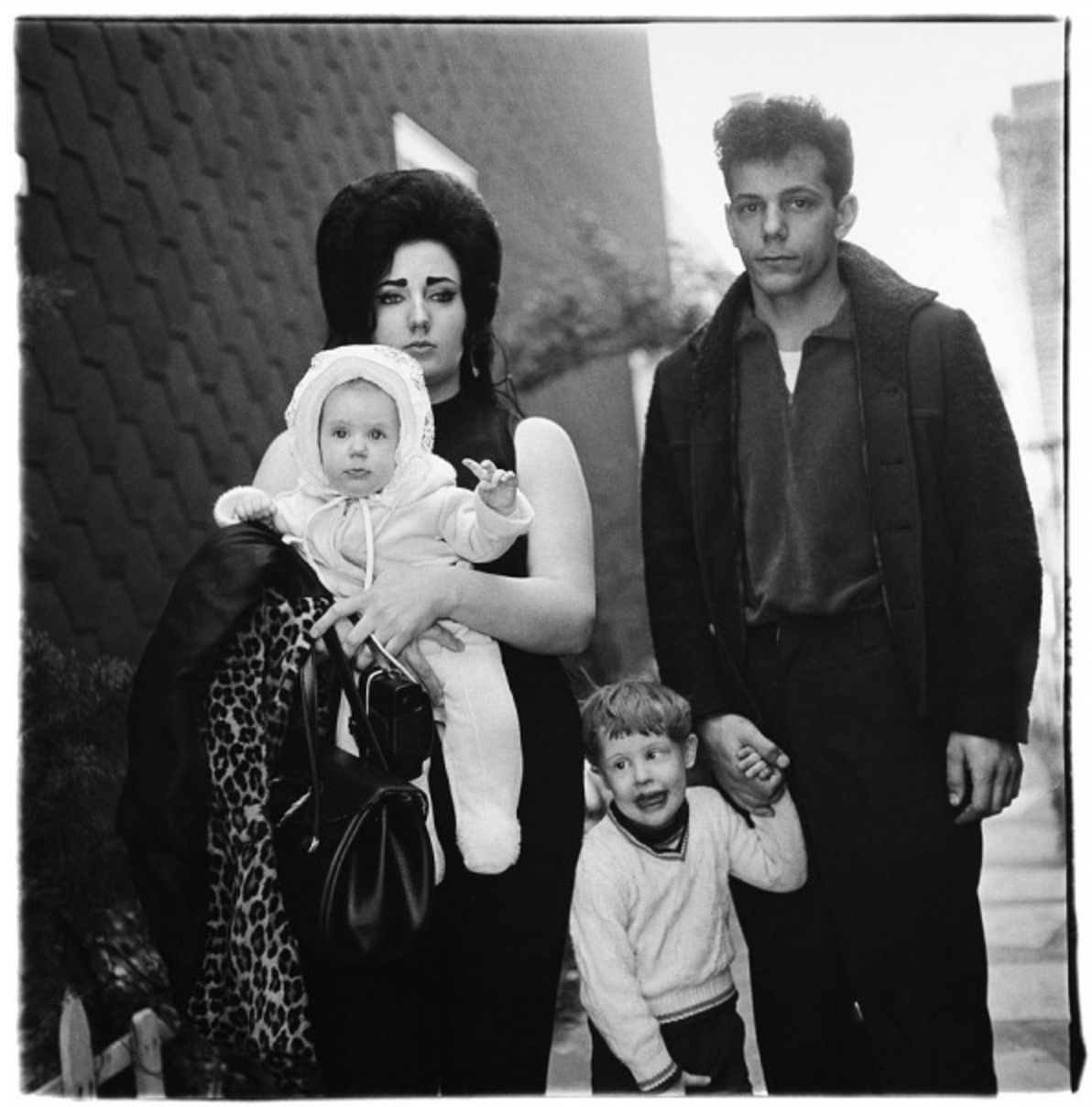
Since I wasn’t a photo student, and had no photo community that I was a part of, I spent a lot of time in a photo book store called A Photographer’s Place. It was just packed with photo books- many of them very rare.
I would go there several times a week and go through book after book. Again, this was before the internet existed and the only way to see these images was in books or galleries. Since I wasn’t part of a photo school this was the way I learned about photography. Many of those images burned into my brain and they would often guide me as I made my images.
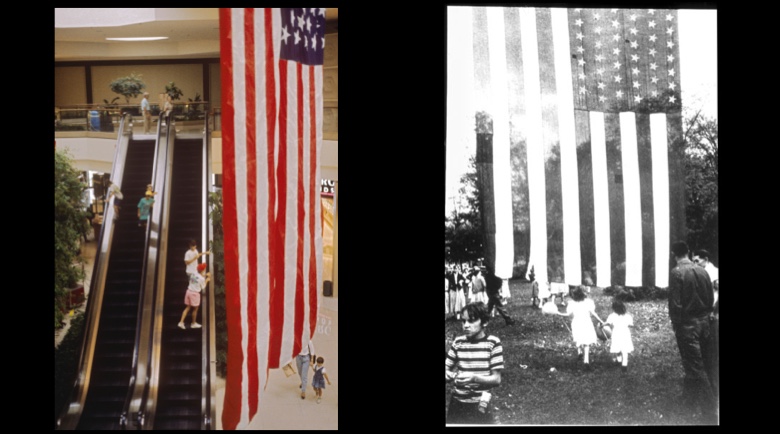
Sometimes I was fully aware of it in the moment, as with the one of the family walking in the mall. I don’t recall thinking of this Robert Frank image when I saw the flag in a mall, but later the connection jumped out to me, and The Americans was a book that I browsed repeatedly. However, I also loved William Eggleston, the Memphis based American photographer who was the first person to have a color show at the museum of Modern Art. When I set out on my journey these two were my biggest inspirations. I thought that if Robert Frank was making the Americans now it would be in malls, and it would be in color – and would capture the essence of the time just as Eggleston had done.
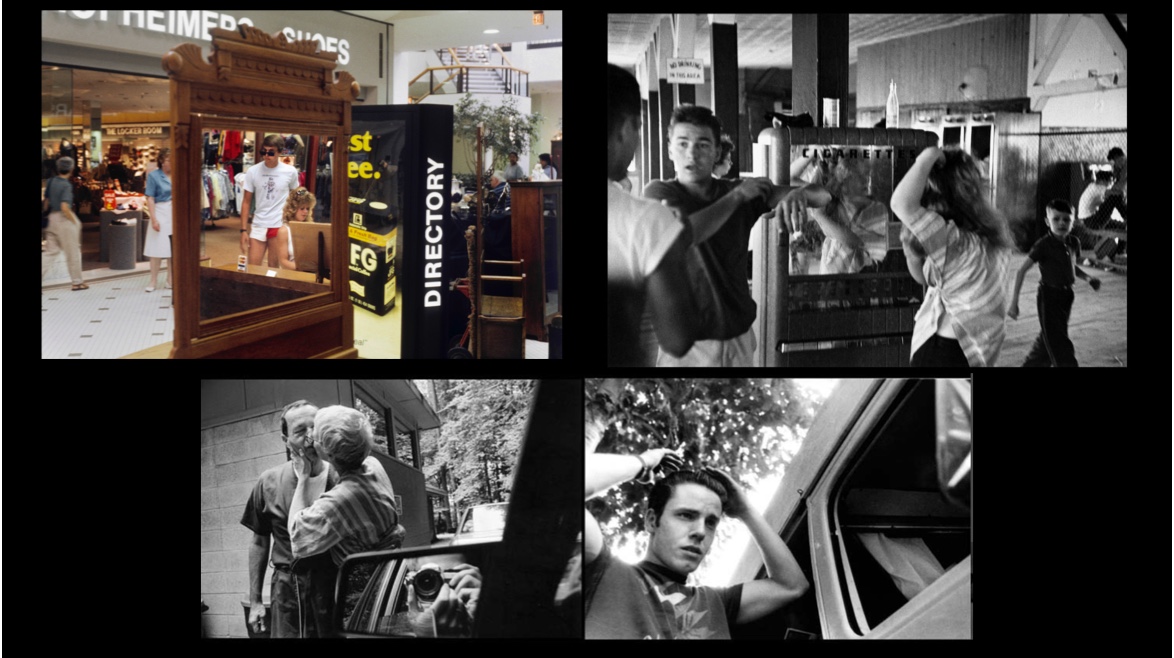
There’s a Bruce Davidson photo of some teenagers at an arcade in Coney Island. It’s in the upper right hand corner of this collage. I don’t recall it influencing the mirror photo in the mall, but the idea was there. However, in the lower image I was trying to capture the feeling of that image. I was influenced by this mirror effect again when making this picture of my parents. However, this one is much more directly influenced by Gary Winogrand or Lee Friedander who used this trope frequently. The point is, we rarely have fully original thoughts. Images become a kind of language and when we learn from certain kinds of images they give us a language. However, the language constantly shifts, adjusts and changes. So while I was influenced by all of these artists, I also hoped to bring something new to the table. In some cases that newness was simply incorporating color into a form that had mostly been romanticized via black and white. Color made the work feel a little more raw, and a little more amateur. I think it’s the fact that the work exists in a space between amateur and professional that makes it resonate so powerfully in the world of the internet. The images are so immediately relatable, that they spark powerfully for people.
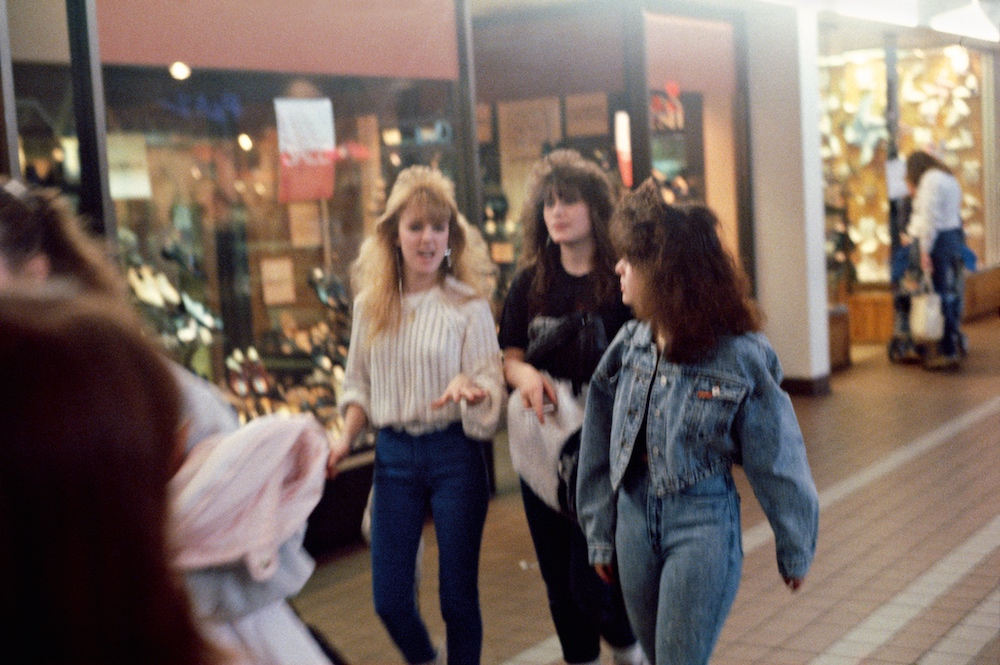
This one here is definitely influenced by Gary Winogrand who had a whole book called Women Are Beautiful. It’s street photos of women, often in groups of three and I was very aware of this work as I made these images.
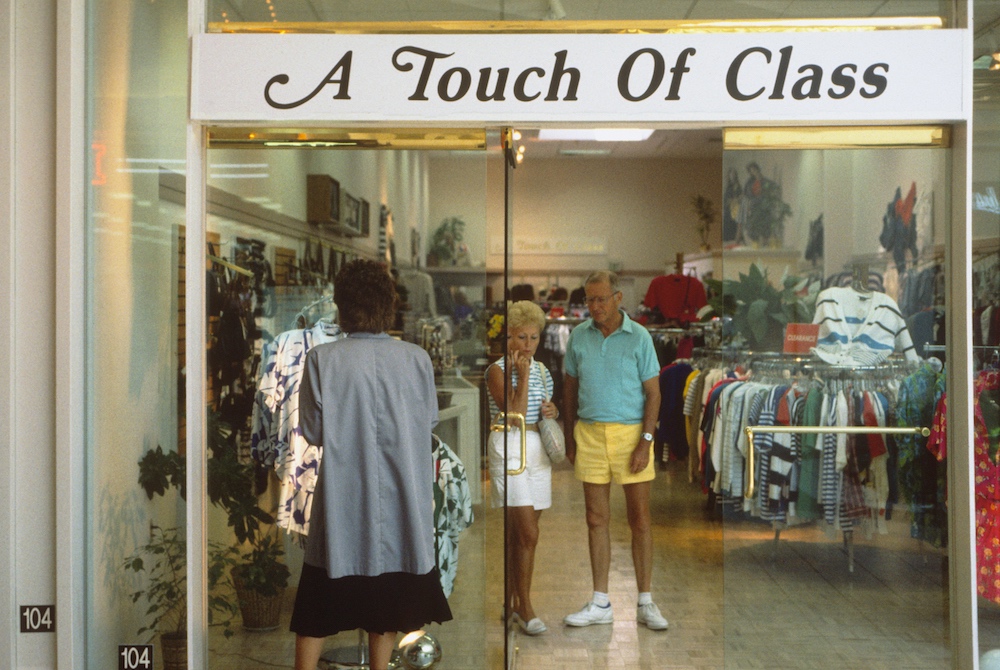
When I walked in the mall I thought about it as much like an anthropologist as I did an artist. I was bowled over by the color, the characters, and the light, and I was immediately struck with the ways in which the mall was a kind of privatized public space. So, while I was focused on making images of the people like a photographer, I thought about them in relation to the larger culture, which I felt very outside of. That anthropology framing gave me the foundation to think of the work as a kind of pure non-critical documentation. I didn’t like the mall at all. The conformity and capitalism on display made me feel kind of queasy, but I set out to simply observe it in a non-judgmental way. I think this helped me to make images that aged well. However, at the time, the response to the work was tepid at best.
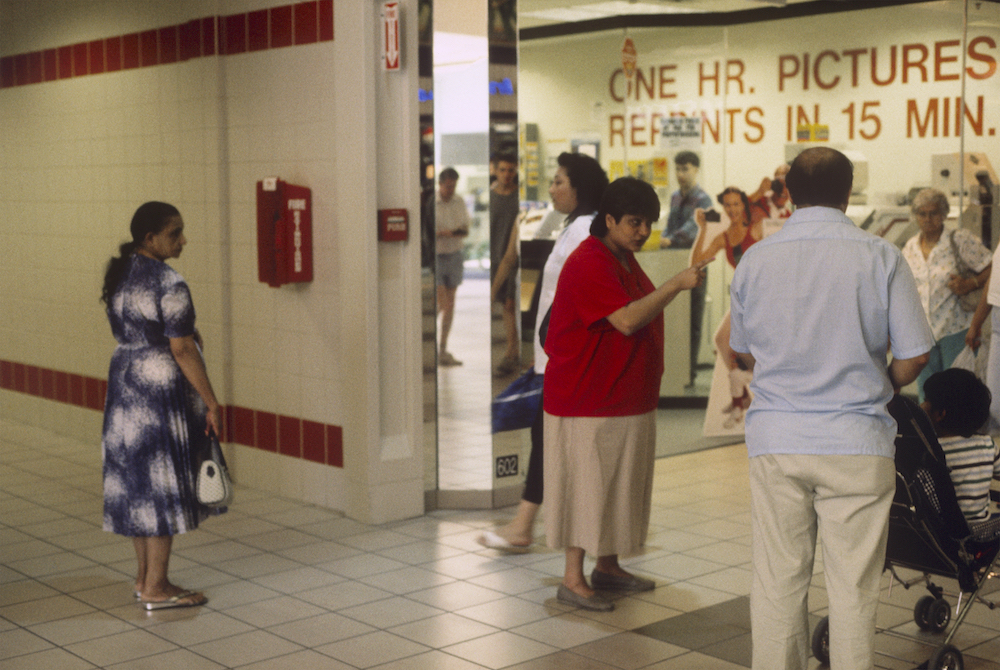
I was interested in capturing what that place felt like without changing it. I wanted to be invisible and have the camera be invisible. Sometimes the lens can change the scene – but I wanted it to disappear. This same idea has continued to run through much of the work that I do.
My teacher was incredibly supportive of the project that I had started and she encouraged me to continue it; suggesting that I drive across the country and take pictures in other malls as well. Having just read Jack Kerouac‘s, “On the Road“ I jumped at the opportunity she presented. I didn’t do any planning but a friend and I headed out hoping to find malls across America.
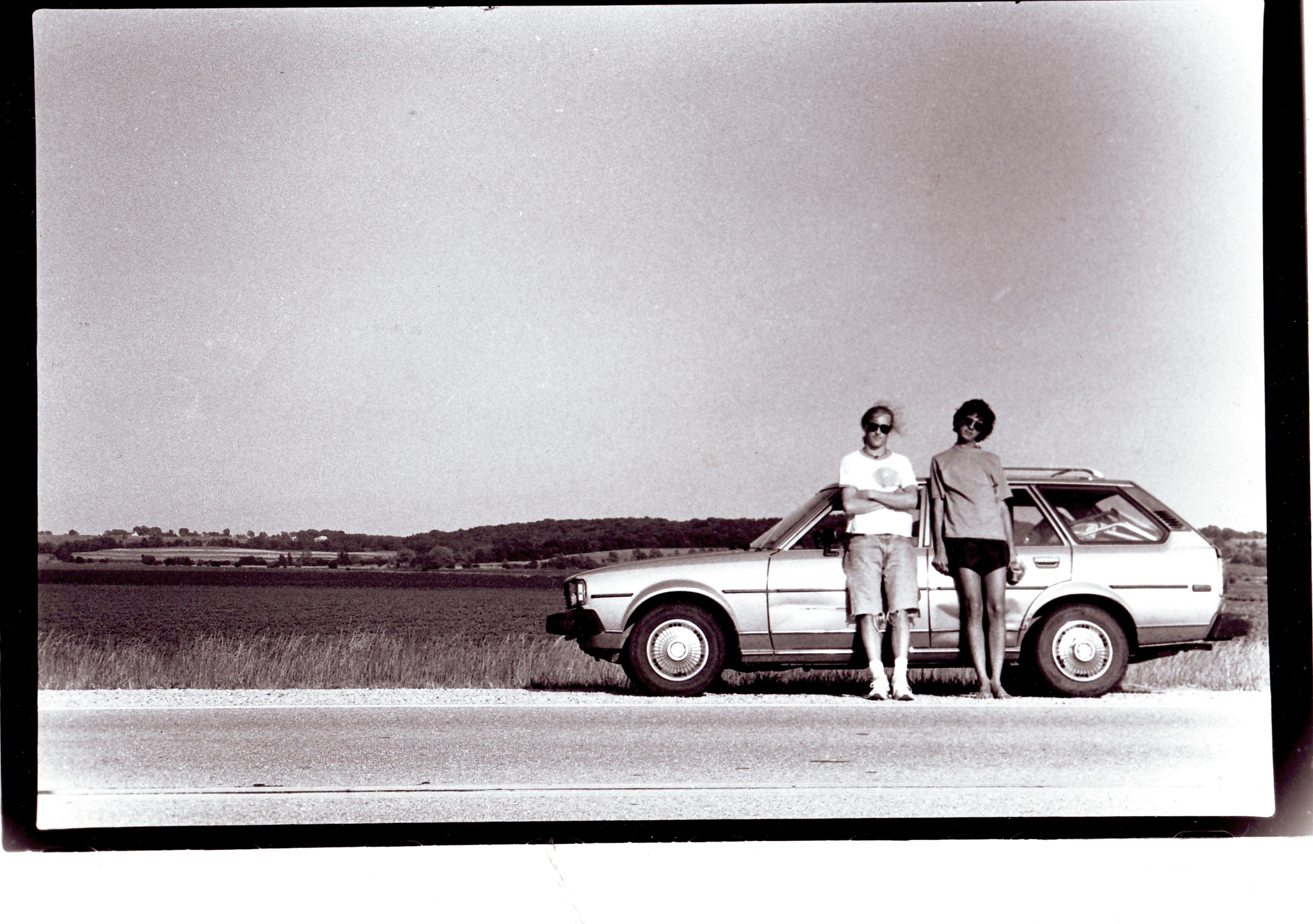
At the time malls were at their cultural zeitgeist, they were frequently depicted in Hollywood movies – 1989 was the year bill and Ted’s excellent adventure with Keanu Reeves and Alex winter that had its climax with historical figures creating havoc in a large suburban mall. The Internet was still just an idea and the retail apocalypse had not yet begun. However, as we traversed America that summer, signs that malls had passed their peak were starting to appear. For one thing, malls no longer had a sense of innovation, almost all of them looked the same, and in fact several were the same. The mall on Long Island that I had started the project in was an anomaly compared to the malls that I encountered across the country which were less populated than the coastal malls centered near big cities.
When I came home with the slides, I brought them to a couple of galleries but I was so disconnected from that world it was almost comedic. Shortly after my trip, I started a band and about 5 years later I projected some of the at a rock show in an art gallery, but they went right back in a box until I found them 20 years later.
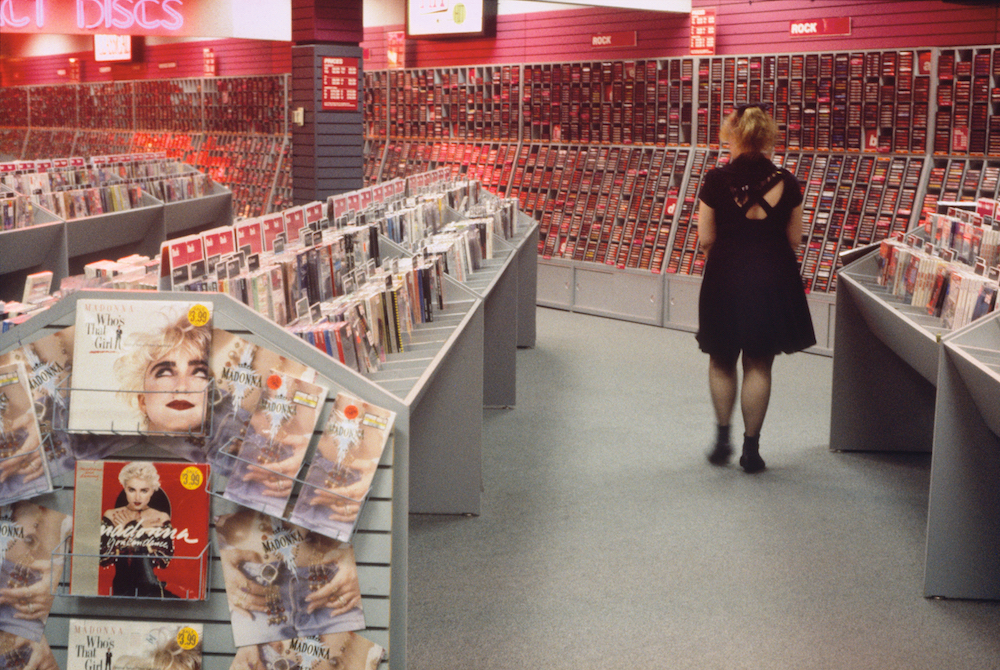
By the time that I found them, the internet was officially a major force in our lives. When I put them online they went viral repeatedly and I learned a lot about how we process images. Nostalgia plays a role, but I think there is something particular about these images that make them jump out more than others. They exist in a middle space between amateur and professional. If they were a little more “professional” people might not relate to them as much, and if they were more amateur they wouldn’t pull people in. They are informed by the history of photography but not overwhelmed by it. They captured something that no one else bothered to look at or pay attention to in an observant way. Obviously, there are millions of images from the 80’s, but since the era was one that was so profoundly shaped by artifice that they drip with that same artifice- and they feel dated. Since these images are simply observations, they feel so present and real that they are now used as a reference for what the era felt like.
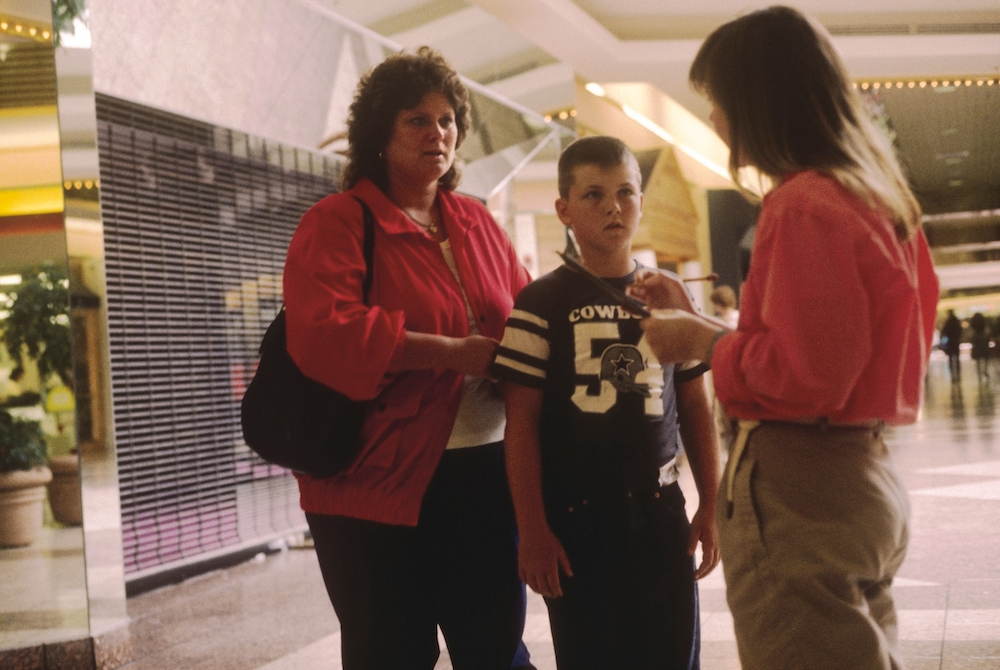
Another thing I learned about images like these is that they spark memories in a different part of our brain, and that feels good. It’s like we have the hard drive on our computer- our more present memory- ones we can access with a bit more ease- and those from 20 years or more are on a hard drive that we have to plug in, and that process of firing it up affects the data.
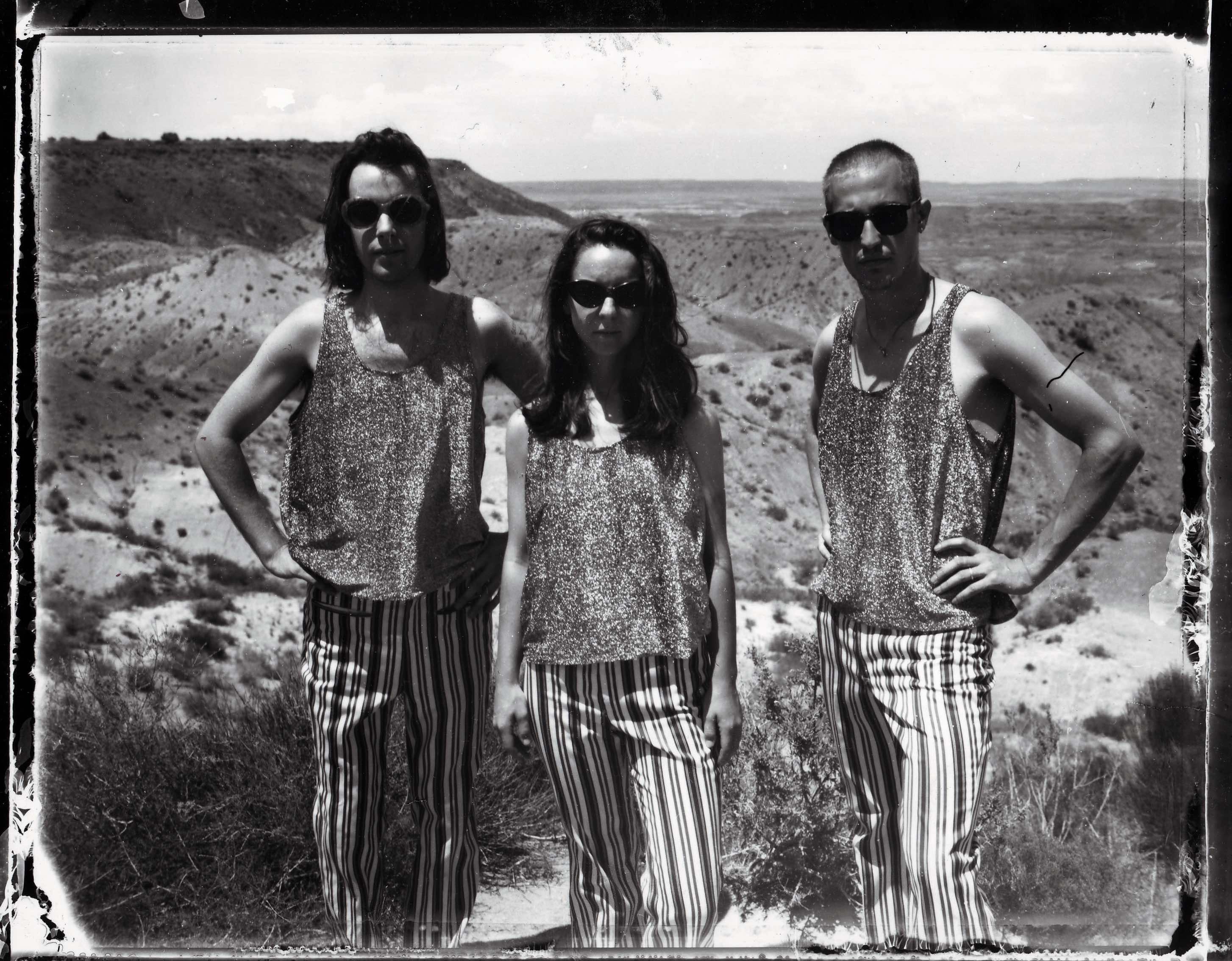
As I stated, after this project I started a band. And that gave me a way to focus my image making – documenting the underground rock scene, and on to making movies about the underground rock world- Both of those projects were informed by the same sense of a kind of duty to document something important that wasn’t being noticed in a raw observant way. Just as the mall images were half professional and half amateur- it was also half anthropology and half art- and that balance has continued throughout our work as filmmakers. Our last many films have been documentaries, but not documentaries that do what people expect them to do- they are once again halfway between professional and not – they don’t follow expectations of the form- so they have some trouble finding their place in the world. When we showed our film Who Took Johnny here in Thessaloniki a few years ago, it was the first and only time it played in Europe. However, it was a big hit on Netflix and the amazing John Waters chose it to play here again. Sometimes the work that isn’t of the moment resonates the most later on.
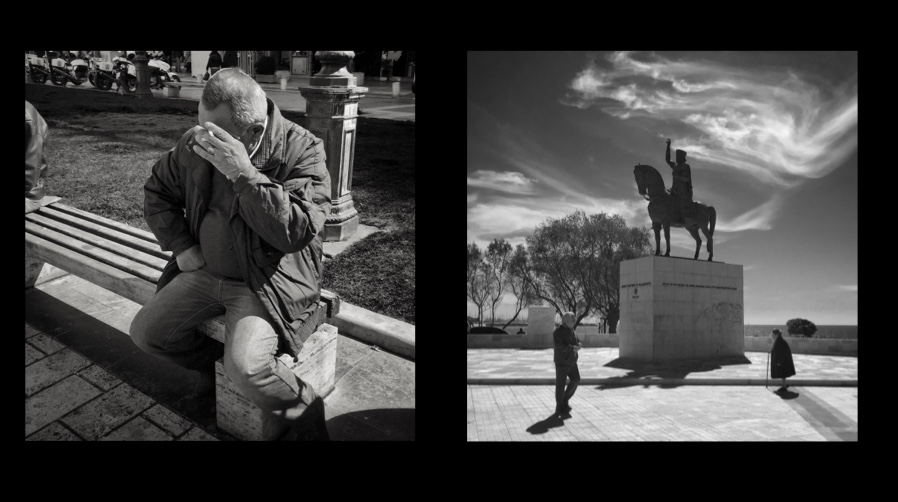
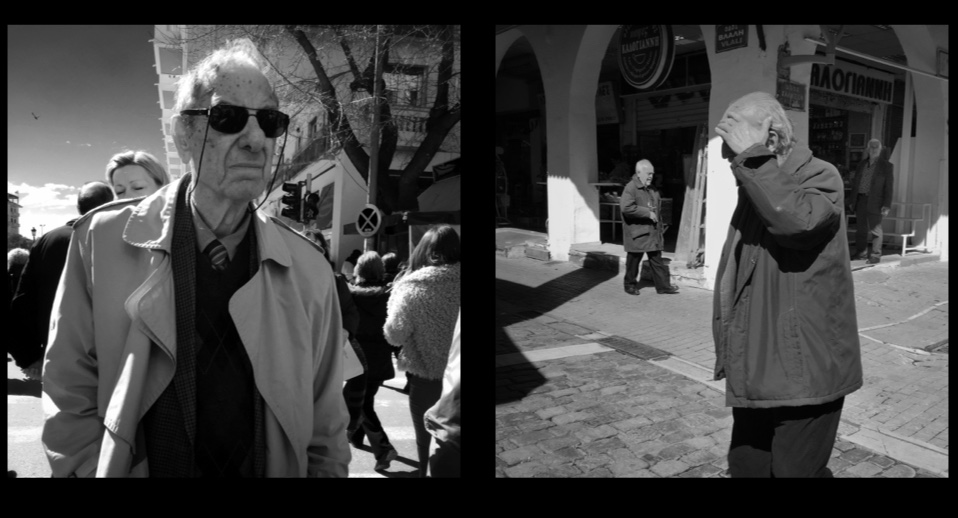
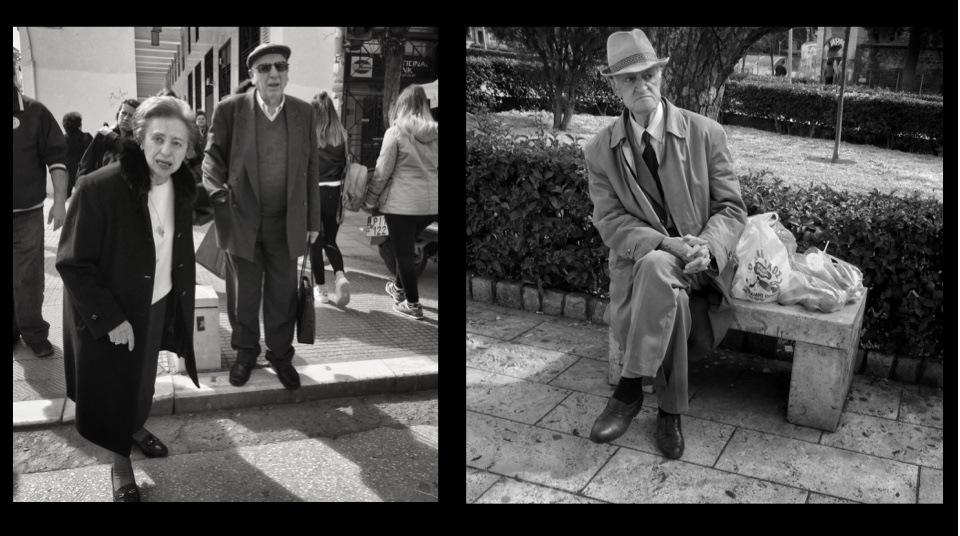
When I was here with Who Took Johnny, I of course made a lot of photos- now instead of a crappy Nikon I just use my phone.


No Comments